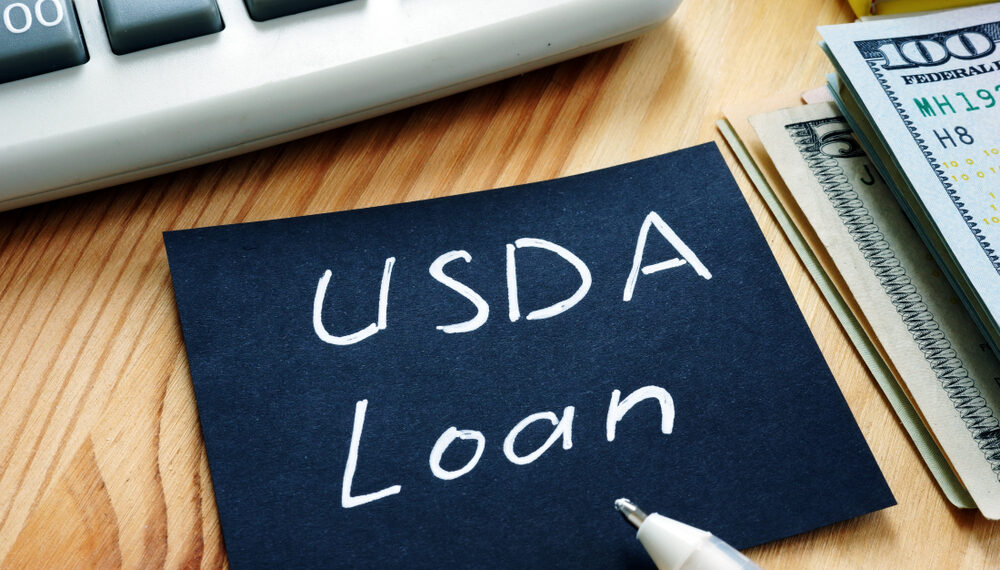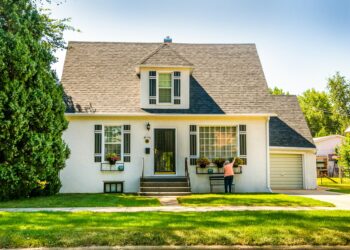If you’re a first-time homebuyer or someone looking to make your dream of owning a home more financially accessible, you’re in the right place. Buying a home is a huge milestone, but one of the biggest hurdles for most buyers is the hefty down payment.
The good news? There are several home loan options available, including USDA loans and others, that can significantly reduce or even eliminate the need for a big upfront payment.
This guide will break down the USDA loan program and explore other home loan types designed to help buyers like you enter the market with less financial strain. By the end of this blog, you’ll better understand which option might suit your needs and how you can take steps toward affordable homeownership.
What Is a Down Payment and Why Is It Important?
A down payment is the initial, upfront amount you pay when buying a home. Most traditional lenders expect buyers to put down at least 20% of the home’s price to secure financing. For example, on a $300,000 home, that’s a staggering $60,000—a number very few young professionals or first-time buyers have readily available.
The down payment acts as your initial equity in the home and reduces the lender’s risk in case of loan default. But don’t worry; you don’t always need to shell out that much money. Loan programs like USDA loans and others are specifically designed to make homeownership more accessible, particularly for those who qualify based on income, geographic location, or other factors.
USDA Loans 101: Affordable Homeownership in Rural and Suburban Areas
USDA loans offer an affordable path to homeownership in rural and suburban areas with low interest rates and no down payment requirements. Backed by the U.S. Department of Agriculture, these loans help eligible buyers secure housing with flexible credit guidelines, making homeownership more accessible for low- to moderate-income families.
What Are USDA Loans?
USDA loans, backed by the U.S. Department of Agriculture (USDA), provide an excellent zero down payment option. These loans are specifically designed for low- to moderate-income individuals looking to buy or improve a home in eligible rural or suburban areas.
Key Benefits of USDA Loans
- Zero Down Payment:
One of the most attractive features of USDA loans is the lack of a required down payment, making homeownership accessible to those who may not have significant savings. - Competitive Interest Rates:
Thanks to government backing, USDA loans often come with lower interest rates compared to conventional loans. - Low Mortgage Insurance Premiums:
While borrowers do pay mortgage insurance, it’s generally less expensive than private mortgage insurance (PMI) on conventional loans.
Who Qualifies for a USDA Loan?
Eligibility for USDA loans hinges on a couple of factors:
- Location:
The property must be located in a USDA-designated rural or suburban area. Don’t worry—many suburban areas qualify, so you might not need to move out to the countryside! - Income:
Your annual household income must fall within the USDA’s limits for your area. - Credit:
Although USDA loans are known for accessible terms, lenders typically require a decent credit score (often 640+).
If you’re wondering whether you meet these qualifications, it’s worth checking the USDA’s website or speaking to a specialized lender.
How to Apply for a USDA Loan
- Step 1: Confirm property eligibility using the USDA’s online map tool.
- Step 2: Find a USDA-approved lender.
- Step 3: Gather relevant financial documents, including proof of income, tax returns, and employment verification.
- Step 4: Submit your application and wait for approval.
Once approved, you could be on your way to homeownership without worrying about a large down payment!
Other Home Loan Types That Can Help You Save on the Down Payment
While USDA loans are an excellent choice for many, they aren’t the only option. Here are some other types of loans that can reduce your upfront costs:
1 FHA Loans
Backed by the Federal Housing Administration (FHA), these loans are another popular choice for first-time buyers or those with lower credit scores.
Benefits:
- Down payments as low as 3.5% (for those with a credit score of 580 or higher).
- More flexible credit score requirements compared to conventional loans.
Who Qualifies?:
FHA loans are ideal for buyers who may not have perfect credit or significant savings for a large down payment.
2 VA Loans
If you’re a current or former member of the military, VA loans, backed by the Department of Veterans Affairs, can help you secure a home loan with zero down payment.
Benefits:
- Zero down payment.
- No private mortgage insurance requirement.
- Competitive interest rates and fewer closing costs.
Who Qualifies?:
VA loans are available to veterans, active-duty service members, and some eligible spouses.
3 Conventional Loans with Low Down Payment Options
Many lenders now offer conventional loans with down payments as low as 3% for qualified buyers.
Benefits:
- Lower private mortgage insurance premiums than FHA loans.
- Flexibility to purchase homes in a variety of locations.
Who Qualifies?:
Borrowers with a strong credit history and steady income may benefit from conventional low down payment options.
4 State and Local First-Time Home Buyer Programs
Most states and municipalities offer first-time home buyer programs, which include down payment assistance or grants.
Benefits:
- Grants or low-interest loans to help with down payments and closing costs.
- Reduced interest rates for eligible buyers.
Who Qualifies?:
Eligibility requirements vary but often depend on income limits and being a first-time homebuyer.
5 Good Neighbor Next Door Program
This HUD program offers a 50% discount on home prices for eligible individuals in community-helping professions, such as teachers, firefighters, and police officers.
Benefits:
- Extremely low down payment required (after discount application).
- Helps stabilize neighborhoods in need of revitalization.
Who Qualifies?:
Available to qualifying individuals in specific professions.
Tips for Choosing the Right Loan Program
With so many options, how do you decide which loan type is right for you? Keep these tips in mind:
- Assess Your Finances:
Look at your savings, income, and credit score to gauge which loan types you’re likely to qualify for. - Identify Your Priorities:
Zero down payment? Lower monthly payments? Figure out which features matter most to you. - Work with an Expert:
A mortgage professional or financial advisor can help direct you to the best program based on your specific needs.
Final Thoughts: Take the First Step Toward Your Dream Home
Buying a home no longer has to mean saving for decades to afford a massive down payment. Options like USDA loans and other low down payment loan programs make it possible for young professionals, first-time buyers, and everyday Americans to access homeownership.
If you’re ready to start your home buying journey, now’s the perfect time to explore these programs and discover what you qualify for. Speak to a loan officer, research eligibility requirements, and take that exciting first step toward turning your dream of owning a home into a reality.








